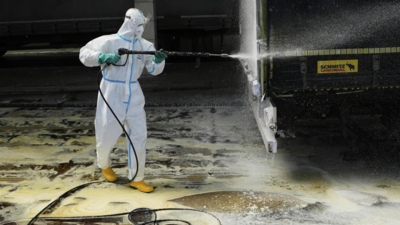Foot-and-mouth disease outbreak prompts mass animal culls and border closures in Central Europe

Authorities across Central Europe are scrambling to contain an outbreak of foot-and-mouth disease that has led to the culling of thousands of animals and prompted border closures between Hungary, Slovakia, and Austria.
The outbreak was first detected in early March on a cattle farm in northwestern Hungary. Within weeks, cases were confirmed on three farms in neighboring Slovakia, as reported news agency AP. Additional infections have since been reported on three more farms in both Hungary and Slovakia — marking the first known outbreak of the disease in either country in over 50 years.
Sándor Szoboszlai, a local entrepreneur and hunter in the Hungarian town of Levél — where nearly 3,000 cattle were culled — described the chaos the outbreak has caused. “Everything is completely upside down,” Szoboszlai told the Associated Press. “We didn’t even think such a thing could happen. Who could count on that? Nobody.”
Foot-and-mouth disease is a highly contagious viral illness that primarily affects cloven-hooved animals, including cattle, pigs, goats, sheep, and deer. Though it poses little risk to humans, the disease can spread rapidly via direct contact, contaminated surfaces, or even through the air.
In Hungary, disinfection operations are ongoing, with authorities placing chemical-soaked mats at the entrances and exits of affected towns in an attempt to prevent the spread of the virus. However, many of the mats have proven ineffective, drying out quickly or being swept aside by passing vehicles, AP observed.
The Slovakian government has responded by closing 16 of its border crossings with Hungary and one with Austria, citing inadequate containment efforts by Hungarian authorities. Austria, which has not reported any infections, closed 23 crossings with Hungary and Slovakia last week.
The Czech Republic, while further removed from the outbreak’s epicenter, has imposed disinfection protocols at all five major border crossings for freight trucks entering the country.
Jiri Cerny, an associate professor at the Czech University of Life Sciences in Prague, told the AP that the disease is most likely to spread through contaminated human objects — including vehicle tires, footwear, and food.
Czech Agriculture Minister Marek Výborný stated that border restrictions could be lifted 30 days after the last infected animal is culled in Slovakia.
In Hungary, no new infections have been confirmed this week. Agricultural Minister István Nagy told reporters Friday that disinfection efforts at the final infected sites are expected to be completed by Saturday.
Earlier in the week, Hungarian official Gergely Gulyás, chief of staff to Prime Minister Viktor Orbán, raised concerns that the outbreak might have been caused by “an artificially produced virus,” suggesting a possible “biological attack.” Gulyás did not provide evidence for the claim, which he said was based on preliminary verbal assessments from a foreign laboratory analyzing samples.
The Hungarian government has pledged to support affected farmers with financial aid, including a moratorium on loan payments and compensation for lost livestock.
Szoboszlai, the Levél resident, became emotional when discussing the impact on a local farmer whose entire herd was culled. “I feel so sorry for him, because this is his life’s work,” he said. “It will be very difficult to start over.”





